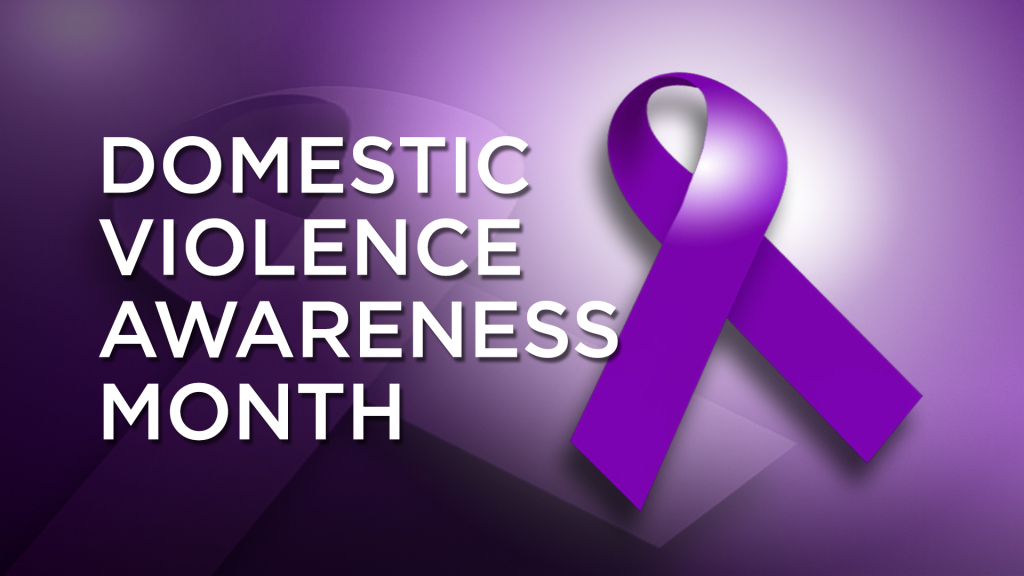October is Domestic Violence Awareness Month by Christina Rascoe

October was declared National Domestic Violence Awareness Month in 1987 as a way to advocate for survivors of domestic violence as well as unite individuals and organizations working on issues regarding domestic violence. Since then, progress has been made to bring awareness to this issue, provide support for domestic violence survivors, and update legislation to properly address domestic violence. Despite this progress, more than 10 million women and men in the United States are physically abused by an intimate partner in the timespan of one year according to the National Coalition Against Domestic Violence. One in three women and one in four men have experienced some form of physical violence by an intimate partner. Given that this month is a time to shed light on this ongoing issue, it should also be a time to educate counselors and counselors in training on important considerations when working with clients who are survivors of domestic violence.
What is the difference between Domestic Violence and Intimate Partner Violence?
You may have seen the terms intimate partner violence and domestic violence used interchangeably. However, there is a distinction between the two. Intimate Partner Violence (IPV) is described as physical violence, sexual violence, stalking, and psychological aggression by a current or former dating partner. IPV is generally more an inclusive term for opposite-sex or same-sex couples. IPV is not limited to sexually intimate couples, it can include dating and marital relationships. Domestic violence is more of a legal term and is described as violence between spouses, but can also include cohabitants such as between parent and child, siblings, cousins, roommates, etc.
Multicultural Considerations for Survivors of Domestic Violence
- Religion/Spirituality – In some cases, domestic violence survivors may stay in abusive relationships because their religious/spiritual beliefs condemn divorce, promotes male dominance, and allows women to be submissive to their husbands. Preserving family image is another reason why domestic violence survivors may not seek help outside their religious community. Religious leaders also may not be adequately trained to address these issues as well as having a hard time promoting traditional family values while also ensuring the safety of domestic violence survivors. Religious/spirituality can also be seen as a protective factor as faith makes men and women less likely to perpetrate violence and can serve as a coping mechanism for survivors.
- Patriarchal Family Structures – Patriarchal societies promote a power imbalance between men and women. As a result, violence towards women can be used as a source of control. Traditional gender roles within the family can cause a different response across cultures. For example, in African American culture, the internalization of the Black superwoman stereotype may prevent Black women from seeking help. In Arabic culture, women may tolerate violence from their husbands due to their partners dealing with occupational or domestic stress.
- Immigrant Status – IPV is common among immigrants and refugees and survivors who are not accustomed to US culture. Language barriers, lack of knowledge of available services, lack of knowledge of the legal system, distrust in government agencies, and fear of deportation from undocumented immigrants who are survivors of domestic violence all serve as barriers to seeking help.
- 2SLGBTQIA+ – According to the National Coalition Against Domestic Violence, 43% of lesbian women and 61% of bisexual women have experienced rape, physical violence, and/or stalking by an intimate partner at some point in their lifetime, compared to 35% of heterosexual women. 26% of gay men and 37.3% of bisexual men have experienced rape, physical violence, and/or stalking by an intimate partner at some point in their lifetime, compared to 29% of heterosexual men. Lastly, transgender victims are more likely to experience IPV in public compared to those who do not identify as transgender. Given these statistics, it is important that we do not overlook these populations and the challenges they face regarding IPV. These populations face many barriers to seeking assistance that is unique to their sexual/affectional orientations and gender identity. Members of 2SLGBTQIA+ communities may not seek help for fear of outing themselves and risk of rejection from close family and friends. 2SLGBTQIA+ survivors might also fear heterosexism and genderism from those they are receiving help from and lack knowledge of 2SLGBTQ+-friendly resources. There is also a lack of trust in law enforcement agencies when reporting abuse in fear of discrimination and police brutality. Lastly, the lack of a more inclusive definition of domestic violence is another barrier for these populations, as some areas exclude same-sex couples from their definition.
Tips for Counseling Implications/Skills
- Establish Immediate Safety – give a detailed assessment including violence severity, available resources, and barriers to accessing resources. Directly assess for suicidal and homicidal risk. Arrange for an emergency shelter if needed.
- Familiarize yourself with state laws regarding mandating reporting for domestic violence.
- Be Mindful of Language – Counselors should be mindful of their language to avoid making the client feel they are somehow to blame for their abuse. Avoid “what could you have done differently?” questions.
- Avoid identifying and changing behaviors that clients have adopted for self-protection. Validate these behaviors they are doing to ensure their safety.
- Engage in attending behaviors and reflective listening.
- Challenge their own biases towards domestic violence and beliefs surrounding gender roles.
- Provide a relationship with client so that they feel heard and empowered which also models to them a healthy relationship.
Community Resources
UNC Health Care Crisis and Assessment Services at WakeBrook
References
NCADV: National Coalition Against Domestic Violence. The Nation’s Leading Grassroots Voice on Domestic Violence. (n.d.). Retrieved October 15, 2022, from https://ncadv.org/STATISTICS
Counseling Today. (2022, July 18). Addressing intimate partner violence with clients. Counseling Today. Retrieved October 15, 2022, from https://ct.counseling.org/2019/06/addressing-intimate-partner-violence-with-clients/
Jackson-Cherry, L. R., & Erford, B. T. (2018). Intimate Partner Violence . In Crisis assessment, intervention, and prevention (pp. 235–273). essay, Pearson.
- Categories: